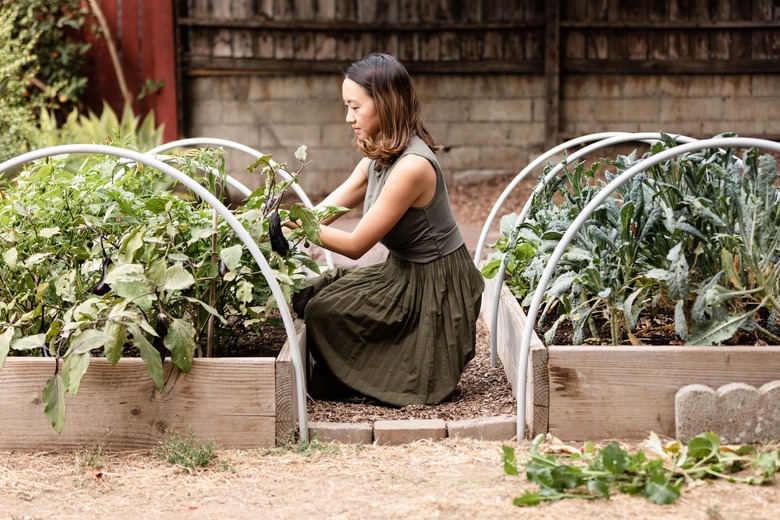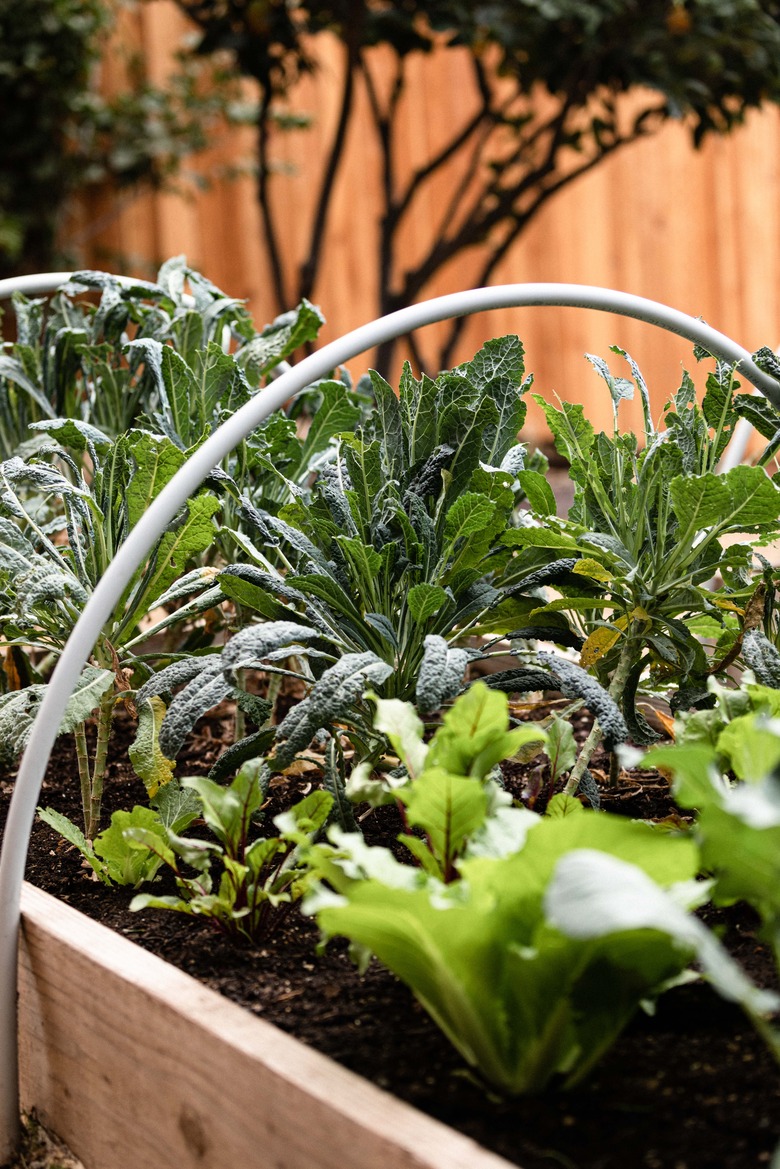Start A Vegetable Garden With These Easy Steps
The best time to start a veggie garden? No time like the present. Setting up your own vegetable garden is one of the easiest (and cheapest) ways to get fresh, organic produce — and it also provides a form of exercise, it gets you outdoors, and could become your new favorite hobby. (Yes, really!) Here's where to begin ...
Pick the Perfect Spot for Your Garden
Location, location, location! That's a cliche usually used in defining real estate value, but it also works for a veggie garden. Picking a great location for your garden is key to getting a good crop. Poor choices lead to poor crops.
So what's a good spot? You'll want to select a spot with sun exposure, because when it comes to growing veggies, the motto is "the more rays the better." Most vegetable plants need at least six hours of direct sunlight every growing day to mature.
The second requirement for a great garden location is loamy soil (a balance of sand, silt, and clay) with good drainage. Good drainage is hard to create. You can up the nutrients in the soil by adding organic compost and you can remove rocks and weeds, but making clay soil porous is a difficult task. It's also important to pick a spot with protection from winds.
Plot Out Your Garden
Even if you have an enormous yard, your first garden should have relatively small boundaries. Though it might seem nice to grow enough zucchini to supply the neighborhood, just say no to excess. Planting too much is a common error for garden newbies, and you'll end up with more work than you want, more problems than you can handle, and more zucchini than you can get rid of.
The best advice for a new gardener is: Start small. Plot out a veggie garden no bigger than 10 feet by 15 feet. This size plot can grow enough vegetables to feed four people for a summer, with extras to give away to next door neighbors. Remember, you need to work that ground, remove weeds and rocks, dig up the ground, and work in a couple of inches of compost.
Decide What to Grow
Here's another rule to live by: Plant only vegetables your household knows and loves. Who cares if you get an abundance of huge beets if nobody likes beets? Write down a list of the veggies your family regularly eats and try to pick from that. But make sure that they grow well in your area. This usually depends on how many "growing days" you have between last frost of spring and first frost of winter.
If you are having trouble, here are popular crops that are quite easy to grow, even for beginners: tomatoes, carrots, peppers, chard, bush beans, zucchini, and potatoes. Include some veggies that will yield multiple crops in one summer, like spinach, beets, beans, and lettuce. Herbs are also easy, so throw in a few, like basil, parsley, and mint.
Planting Your Vegetables
Once you have selected the veggies you want to grow, you'll need to decide whether to plant individual seedlings — you can often get them in six-packs at the garden store — or seeds. Seeds are less expensive by far, but they take longer to reach harvest. If you do go with seeds, buy the highest quality you can find. Order them online if you can't find good quality seeds at a local store.
Lay out 11 rows running north to south to allow for the best sun exposure. Decide where to position your different crops based on their mature height and growth curve. You don't want a tall veggie like corn, for example, shadowing out short veggies like lettuce or radishes. Then space your seeds appropriately, paying attention to the guidance on the package. Crowded plants often have growing issues and don't grow like they should. Keep the suggested planting dates for seeds (listed on the packets) in mind, or download a gardening calendar for your area.
Watering for Your Crops
The most important thing you can do for your veggie garden is watering it appropriately. Every single plant needs water to grow and thrive, and vegetables develop faster than some other shrubs. Without regular irrigation, your plants will not do well.
So how to water? You don't just want to pull out the hose whenever it occurs to you. First, only water when the dirt is dry. If you can make a "snowball" of soil, it doesn't need water. If it doesn't, or if the soil surface looks cracked, it's time to get out the hose.
Second, try to water in the morning. It's healthier for those plants if they don't "go to bed" with wet foliage since mold and fungus can result. What if it is raining? Vegetable plants need enough irrigation to allow water to seep six inches below the surface, so after a light rain shower, water another few inches. Surface water evaporates quickly in the sun.
Have Fun with Your Garden
Here's one last piece of advice for that first vegetable garden: Have fun with it! People often talk about the joy of working in the garden, and you'll want to keep that delight alive.
Think of the "rules" as gardening tips rather than absolutes, and keep in mind that you won't be graded. Enjoy yourself. Get your hands dirty. Dance in the sun and sing to your plants. Growing plants is a creative endeavor and creativity only thrives in an atmosphere where fun and experimentation are encouraged.

